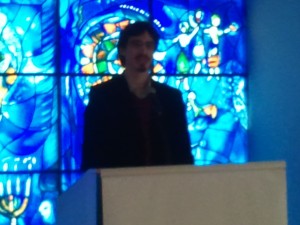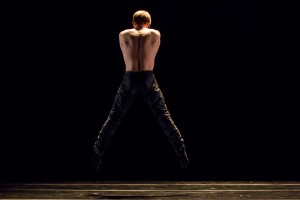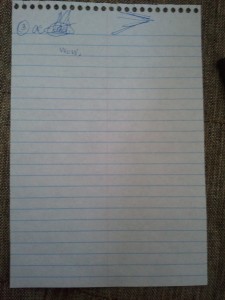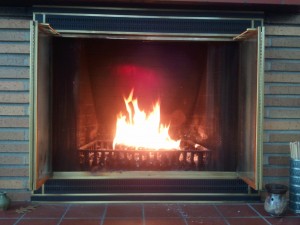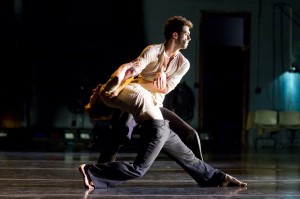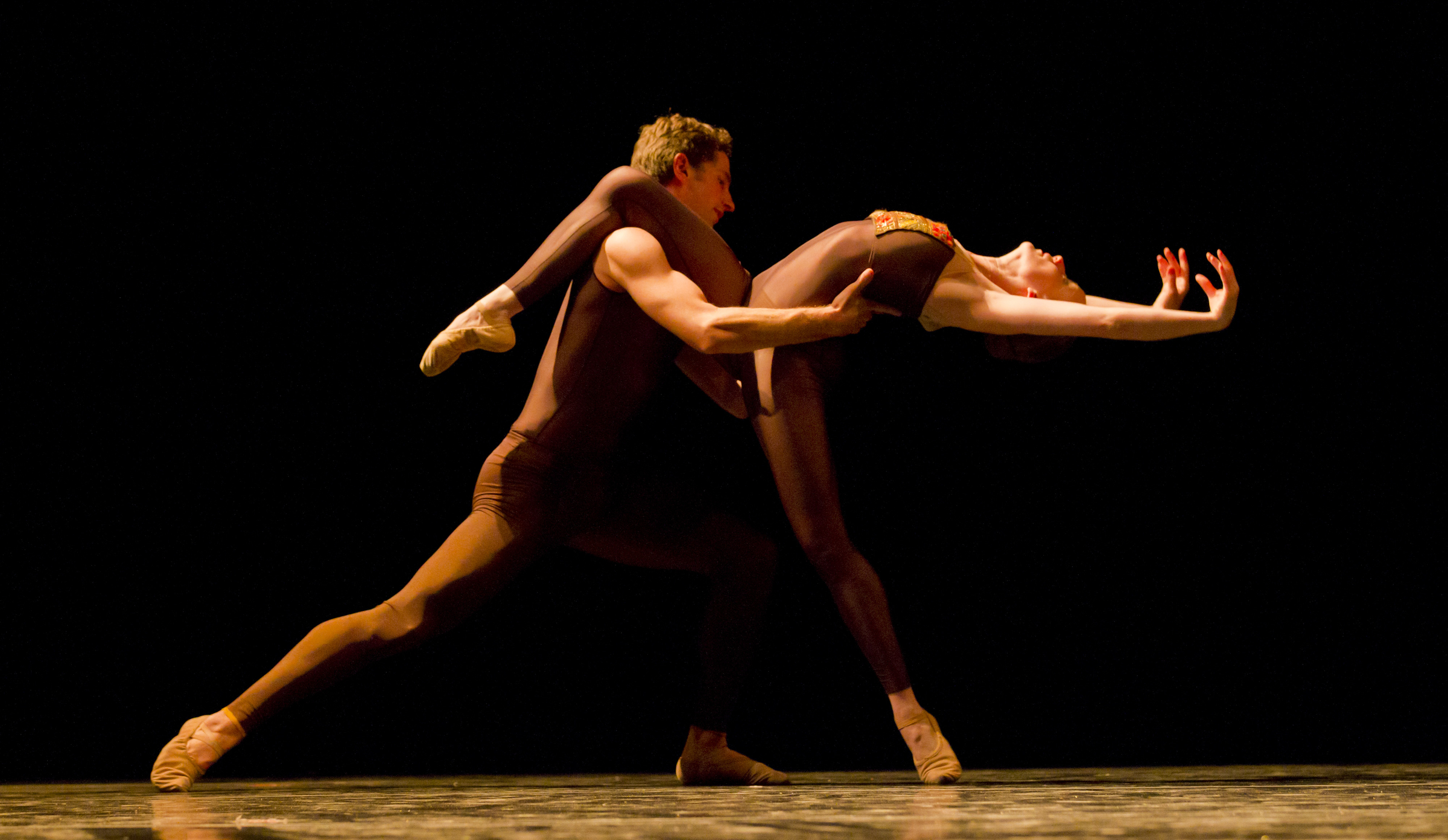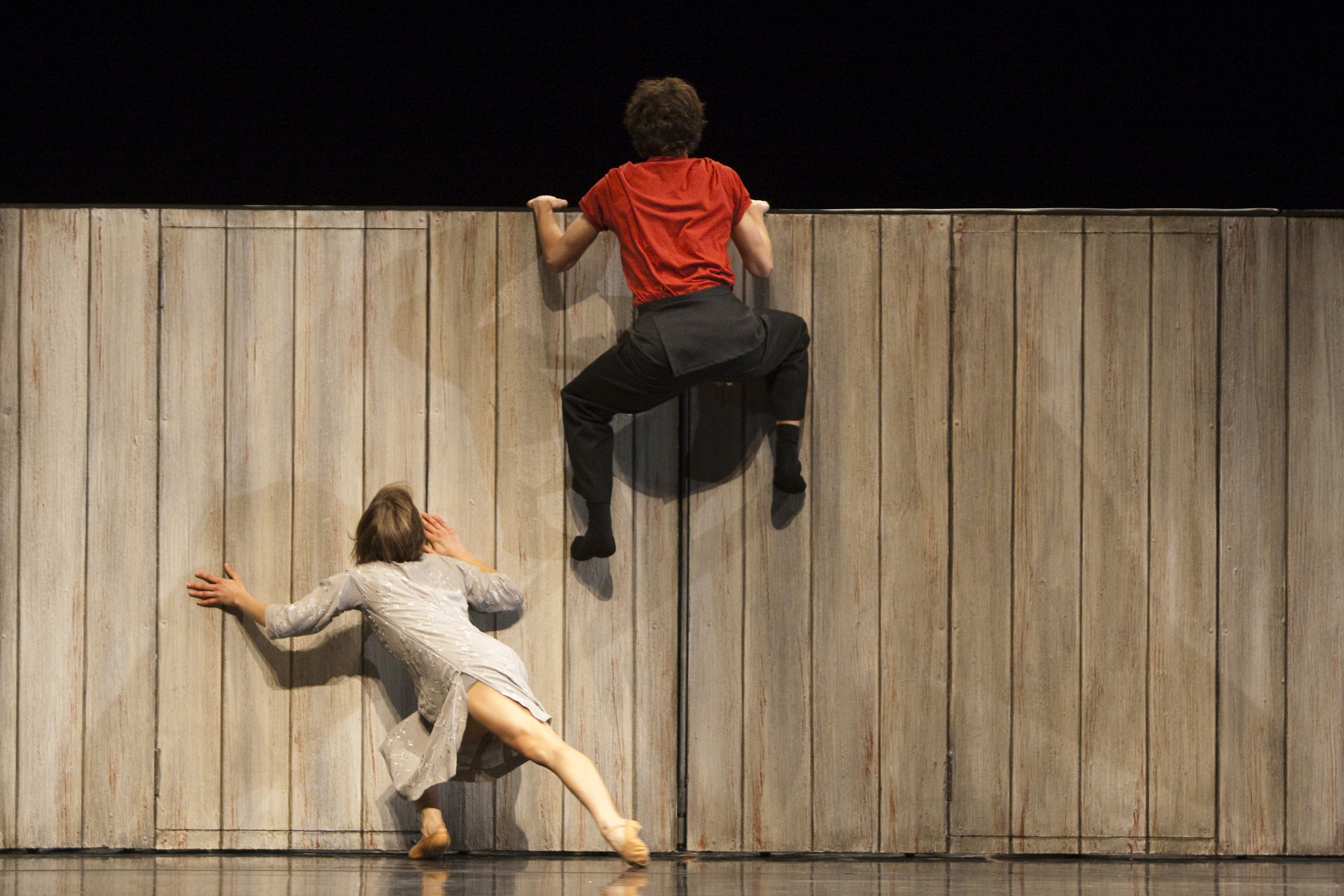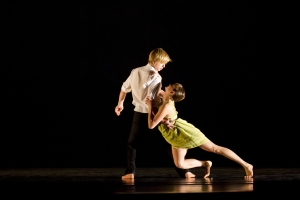![]() Last week I sat in on rehearsal at Hubbard Street Dance Chicago’s (HSDC) West Loop studios. The well-respected group is prepping for a spring run of shows at the Harris Theater, March 15 – 18. Two of the three pieces they are presenting are audience favorites (and two of my favorites) from last season that pushed the dancers to new limits. Alonzo King’s Following the Subtle Current Upstream takes classical technique and tilts it off balance, skewing lines and testing the boundaries of center. Sharon Eyal’s Too Beaucoup challenges detail, sensory and memory capacity while stripping away virtually any sign of individuality. They are a study in contrast. It’s the third work on the program that proves to be an enigma. HSDC Resident Choreographer Alejandro Cerrudo, always a man of mystery, presents the world premiere of Little mortal jump at the top of the show. He will then dance in the remaining two pieces.
Last week I sat in on rehearsal at Hubbard Street Dance Chicago’s (HSDC) West Loop studios. The well-respected group is prepping for a spring run of shows at the Harris Theater, March 15 – 18. Two of the three pieces they are presenting are audience favorites (and two of my favorites) from last season that pushed the dancers to new limits. Alonzo King’s Following the Subtle Current Upstream takes classical technique and tilts it off balance, skewing lines and testing the boundaries of center. Sharon Eyal’s Too Beaucoup challenges detail, sensory and memory capacity while stripping away virtually any sign of individuality. They are a study in contrast. It’s the third work on the program that proves to be an enigma. HSDC Resident Choreographer Alejandro Cerrudo, always a man of mystery, presents the world premiere of Little mortal jump at the top of the show. He will then dance in the remaining two pieces.
His new work for ten dancers has little bits of his older works Off Screen (2008), Extremely Close (2007) and Lickety Split (2006) and is set to an eclectic score that pieces together a collage of musical ranges from Tom Waits to Max Richter. “I think the piece has a twist,” Cerrudo said before a run-thru at rehearsal. “It starts one way and finishes in a completely different world. I tried to do that as smooth as possible. To me, the mood of the piece starts very theatrical and finishes…more dance, more intense.” Although he begins every new work with a fresh perspective, Little mortal jump shows glimpses of his evolution as a choreographer, while also proving he is a master of both extremes – humorous theatricality to intense beauty. Incorporating interactive set pieces adds an intriguing touch that will surprise all. A duet with Ana Lopez and Jesse Bechard includes a slow-motion sequence that is a tender, private moment in a fast-paced piece.
It’s an exciting time for Cerrudo. In late February, it was announced that HSDC’s 35th anniversary season would open with a full-length work by Cerrudo inspired by Marc Chagall’s America Windows at the Art Institute of Chicago. After this week’s premiere, he has a week off then travels to Milwaukee for final rehearsals of Extremely Close, then to set a new work on Aspen Santa Fe Ballet. The rest of the summer will be working on the Chagall piece in the studio. He, of course already is planning it in his head. “I’ll try to make it fun,” he said. “I know what I want a full-evening to look like or feel like, but it doesn’t mean I can make it work that way. I’m going to try my best.” If his past work is any indication, his best will surely delight and enthrall.
Hubbard Street Dance Chicago at the Harris Theater, 205 E. Randolph. Tickets are $25-$94. Call 312.850.9744 or visit hubbardstreetdance.com
Thursday, March 15 at 7:30 pm, Friday & Saturday, March 16 & 17 at 8 pm and Sunday, March 18 at 3 pm.

